Volume 8 | Number 1 | May 2016
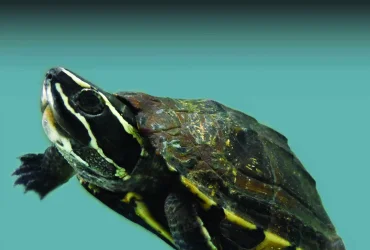 v8i1.214
v8i1.214ISSN: 1800-427X (print)
eISSN: 1800-427X (online)
DOI:10.47605/tapro.v8i1.214
Submitted date: 30 May 2015
Accepted date: 24 March 2016
Published date: 26 March 2016
Pp. 37–40.
First substantiated record of Ceriops decandra (Rhizophoraceae) in Sri Lanka
S.P. Ekanayake*, W.L.D.P.T.S. de A. Goonetilleke, A.M.S.M.R.W. Jayasekera, M.D.C. Asela, A.L. Pieris & K.M.A. Bandara
*Corresponding author. E-mail: sekanayake@gmail.com
In Sri Lanka there are 20 true mangrove plant species and Rhizophoraceae is the most diverse family represented by six species. Of these the genus Ceriops Arn., has five: C. australis (C.T. White) Ballment, T.J. Sm. & J.A. Stoddart; C. decandra (Roxb. ex Wight & Arn.) W. Theob.; C. pseudodecandra Sheue, H.G. Liu, C.C. Tsai & Yuen P. Yang; C. tagal (Perr.) C.B. Rob.; and C. zippeliana Blume.
Section Editor: Chiou-Rong Sheue
eISSN: 1800-427X (online)
DOI:10.47605/tapro.v8i1.214
Submitted date: 30 May 2015
Accepted date: 24 March 2016
Published date: 26 March 2016
Pp. 37–40.
First substantiated record of Ceriops decandra (Rhizophoraceae) in Sri Lanka
S.P. Ekanayake*, W.L.D.P.T.S. de A. Goonetilleke, A.M.S.M.R.W. Jayasekera, M.D.C. Asela, A.L. Pieris & K.M.A. Bandara
*Corresponding author. E-mail: sekanayake@gmail.com
In Sri Lanka there are 20 true mangrove plant species and Rhizophoraceae is the most diverse family represented by six species. Of these the genus Ceriops Arn., has five: C. australis (C.T. White) Ballment, T.J. Sm. & J.A. Stoddart; C. decandra (Roxb. ex Wight & Arn.) W. Theob.; C. pseudodecandra Sheue, H.G. Liu, C.C. Tsai & Yuen P. Yang; C. tagal (Perr.) C.B. Rob.; and C. zippeliana Blume.
Section Editor: Chiou-Rong Sheue
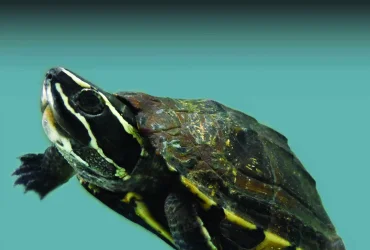 v8i1.213
v8i1.213ISSN: 1800-427X (print)
eISSN: 1800-427X (online)
DOI:10.47605/tapro.v8i1.213
Submitted date: 14 March 2015
Accepted date: 14 March 2016
Published date: 26 March 2016
Pp. 33–36.
Use of sleeping trees by golden langurs (Trachypithecus geei)
Debahutee Roy* & Rajarathinavelu Nagarajan
*Corresponding author. E-mail: moni.roy8@gmail.com
The selection of secure and stable sleeping places and the abundance of such sites in the forest can impact each individual’s chances of survival and reproductive success. The avoidance of predators is often stressed as a major influence on the selection of sleeping places in non-human primates. The effect of predators on sleeping site selection has been revealed in many cases: e.g. Hamadryas baboons (Papio hamadryas) in Saudi Arabia slept on easily accessible slopes when predators were scarce.
Section Editor: Anna Nekaris
eISSN: 1800-427X (online)
DOI:10.47605/tapro.v8i1.213
Submitted date: 14 March 2015
Accepted date: 14 March 2016
Published date: 26 March 2016
Pp. 33–36.
Use of sleeping trees by golden langurs (Trachypithecus geei)
Debahutee Roy* & Rajarathinavelu Nagarajan
*Corresponding author. E-mail: moni.roy8@gmail.com
The selection of secure and stable sleeping places and the abundance of such sites in the forest can impact each individual’s chances of survival and reproductive success. The avoidance of predators is often stressed as a major influence on the selection of sleeping places in non-human primates. The effect of predators on sleeping site selection has been revealed in many cases: e.g. Hamadryas baboons (Papio hamadryas) in Saudi Arabia slept on easily accessible slopes when predators were scarce.
Section Editor: Anna Nekaris
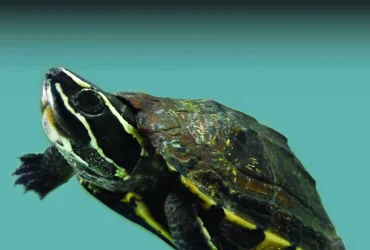 v8i1.212
v8i1.212ISSN: 1800-427X (print)
eISSN: 1800-427X (online)
DOI:10.47605/tapro.v8i1.212
Submitted date: 24 October 2014
Accepted date: 24 March 2016
Published date: 26 March 2016
Pp. 24–32.
Herbarium collections of the Botany Department, Fergusson College, Pune, India
Ashish N. Nerlekar
*E-mail: ashishadmirerofficus@gmail.com
Herbaria provide researchers with several services and opportunities, including the identification of specimens, the preservation of voucher and type specimens and as teaching aids. They also form the basis for research including the preparation of floras and monographs. Further, herbaria are of value as they can help in mapping the geographical distribution of species, the establishment of ecological relationships, information on ethnobotanical uses, and as a resource for phytochemical analyses
Section Editor: Henry Noltie
eISSN: 1800-427X (online)
DOI:10.47605/tapro.v8i1.212
Submitted date: 24 October 2014
Accepted date: 24 March 2016
Published date: 26 March 2016
Pp. 24–32.
Herbarium collections of the Botany Department, Fergusson College, Pune, India
Ashish N. Nerlekar
*E-mail: ashishadmirerofficus@gmail.com
Herbaria provide researchers with several services and opportunities, including the identification of specimens, the preservation of voucher and type specimens and as teaching aids. They also form the basis for research including the preparation of floras and monographs. Further, herbaria are of value as they can help in mapping the geographical distribution of species, the establishment of ecological relationships, information on ethnobotanical uses, and as a resource for phytochemical analyses
Section Editor: Henry Noltie
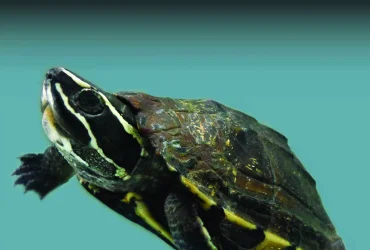 v8i1.211
v8i1.211ISSN: 1800-427X (print)
eISSN: 1800-427X (online)
DOI:10.47605/tapro.v8i1.211
Submitted date: 15 April 2015
Accepted date: 15 March 2016
Published date: 26 March 2016
Pp. 21–23.
27 years: the longest longevity and residency record for northern Indian Ocean blue whales
Asha de Vos
*E-mail: asha.devos@lincoln.oxon.org
The blue whale population using the waters around Sri Lanka is little studied and considered a subpopulation of pygmy blue whales (Balaenoptera musculus indica Blyth, 1859) that largely remain in the waters of the northern Indian Ocean with a portion remaining resident around Sri Lanka throughout the year. Blue whales are the most commonly observed baleen whales in Sri Lankan waters.
Section Editor: Phillip Clapham
eISSN: 1800-427X (online)
DOI:10.47605/tapro.v8i1.211
Submitted date: 15 April 2015
Accepted date: 15 March 2016
Published date: 26 March 2016
Pp. 21–23.
27 years: the longest longevity and residency record for northern Indian Ocean blue whales
Asha de Vos
*E-mail: asha.devos@lincoln.oxon.org
The blue whale population using the waters around Sri Lanka is little studied and considered a subpopulation of pygmy blue whales (Balaenoptera musculus indica Blyth, 1859) that largely remain in the waters of the northern Indian Ocean with a portion remaining resident around Sri Lanka throughout the year. Blue whales are the most commonly observed baleen whales in Sri Lankan waters.
Section Editor: Phillip Clapham
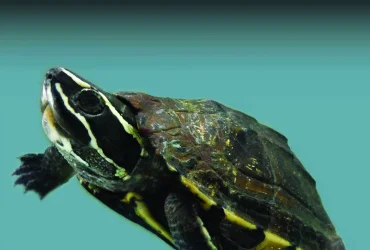 v8i1.210
v8i1.210ISSN: 1800-427X (print)
eISSN: 1800-427X (online)
DOI:10.47605/tapro.v8i1.210
Submitted date: 3 November 2015
Accepted date: 3 March 2016
Published date: 26 March 2016
Pp. 10–20.
FEEDING HABITS OF PACK LIVING DHOLE (Cuon alpinus) IN A DRY DECIDUOUS FOREST OF EAST JAVA, INDONESIA
Sandy Nurvianto*, Rury Eprilurahman, Muhammad Ali Imron & Sven Herzog
*Corresponding author. E-mail: sandy_nurvi@yahoo.com
Abstract
We conducted a study on the feeding habits of dholes in the Baluran National Park, Indonesia. Scat analysis was employed to identify the prey consumed. In total, 54 scats were collected across the park during the dry season of 2013 and analyzed to identify the prey of this species; at least 20 prey species were identified. Ungulates are the most important prey, estimated to contribute more than 95 % of the biomass consumed by dholes in BNP. Efforts to ensure availability of ungulates and to secure habitat will be the key to the dhole’s conservation in Java.
Key words : Baluran National Park, conservation, food, predator, prey, scat analysis, ungulates
Section Editor: Colin Groves
eISSN: 1800-427X (online)
DOI:10.47605/tapro.v8i1.210
Submitted date: 3 November 2015
Accepted date: 3 March 2016
Published date: 26 March 2016
Pp. 10–20.
FEEDING HABITS OF PACK LIVING DHOLE (Cuon alpinus) IN A DRY DECIDUOUS FOREST OF EAST JAVA, INDONESIA
Sandy Nurvianto*, Rury Eprilurahman, Muhammad Ali Imron & Sven Herzog
*Corresponding author. E-mail: sandy_nurvi@yahoo.com
Abstract
We conducted a study on the feeding habits of dholes in the Baluran National Park, Indonesia. Scat analysis was employed to identify the prey consumed. In total, 54 scats were collected across the park during the dry season of 2013 and analyzed to identify the prey of this species; at least 20 prey species were identified. Ungulates are the most important prey, estimated to contribute more than 95 % of the biomass consumed by dholes in BNP. Efforts to ensure availability of ungulates and to secure habitat will be the key to the dhole’s conservation in Java.
Key words : Baluran National Park, conservation, food, predator, prey, scat analysis, ungulates
Section Editor: Colin Groves
Hubungi Kami
The ultimate aim of the journal is to provide an effective medium for communication of the latest and best scientific information.
Copyright © 2020 Taprobanica. All Rights Reserved
Jasa Pembuatan Website by IKT




